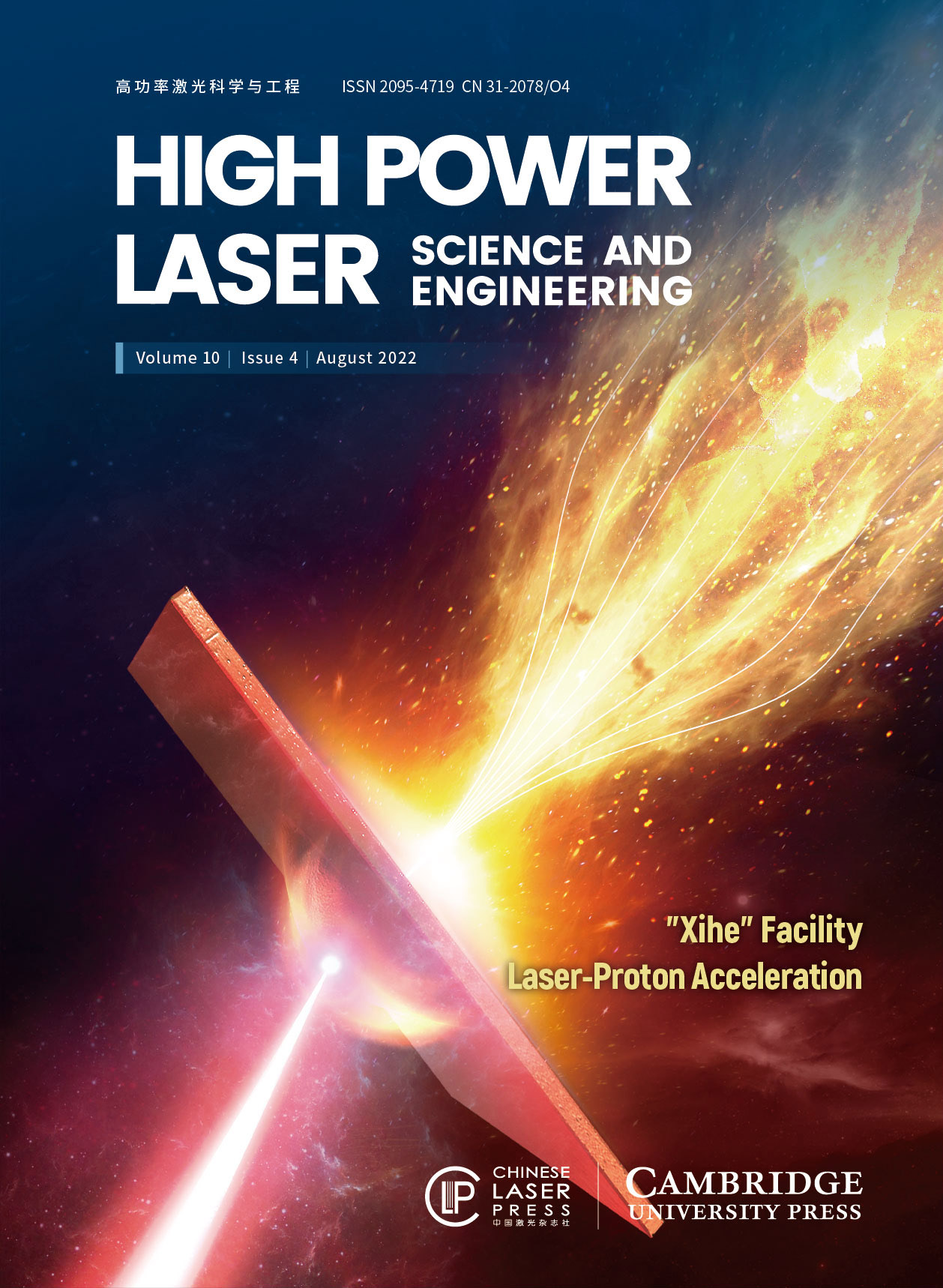 View fulltext
View fulltext
In this work, an all-fiberized and narrow-linewidth fiber amplifier with record output power and near-diffraction-limited beam quality is presented. Up to 6.12 kW fiber laser with the conversion efficiency of approximately 78.8% is achieved through the fiber amplifier based on a conventional step-index active fiber. At the maximum output power, the 3 dB spectral linewidth is approximately 0.86 nm and the beam quality factor is Mx2 = 1.43, My2 = 1.36. We have also measured and compared the output properties of the fiber amplifier employing different pumping schemes. Notably, the practical power limit of the fiber amplifier could be estimated through the maximum output powers of the fiber amplifier employing unidirectional pumping schemes. Overall, this work could provide a good reference for the optimal design and potential exploration of high-power narrow-linewidth fiber laser systems.
Heating of over-dense plasma represents a long-standing quest in laser–plasma physics. When the strength of the magnetic field is above the critical value, a right-handed circularly polarized laser could propagate into and heat up the highly magnetized over-dense collisional plasma directly; the processes are dependent on the parameters of the laser, plasma and magnetic field. The parametric dependence is fully studied both qualitatively and quantitatively, resulting in scaling laws of the plasma temperature, heating depth and energy conversion efficiency. Such heating is also studied with the most powerful CO2 and strongest magnetic field in the world, where plasma with density of ${10}^{23}$ cm–3 and initial temperature of 1 keV is heated to around 10 keV within a depth of several micrometres. Several novel phenomena are also discovered and discussed, that is, local heating in the region of high density, low temperature or weak magnetic field.
Thermal effects are typically considered as obstacles to high-repetition-rate stimulated Brillouin scattering (SBS) pulse compression. In this paper, a novel method is proposed for improving the SBS output characteristics by exploiting thermal effects on the liquid medium. Using HT270, the SBS output parameters with the medium purification and rotating off-centered lens methods are studied at different repetition rates. The results indicate that these two methods can alleviate thermal effects and improve the energy efficiency, but the rotating method reduces the energy stability because of the aggravated optical breakdown at the kilohertz-level repetition rate. For a 35-mJ pump energy, the energy efficiency at 2 kHz without the rotating method is 30% higher than that at 100 Hz and 70% higher than that at 500 Hz. The enhancement of the SBS output characteristics by thermal effects is demonstrated theoretically and experimentally, and 2-kHz high-power SBS pulse compression is achieved with HT270.
We report on the design and characterization of the plasma mirror system installed on the J-KAREN-P laser at the Kansai Photon Science Institute, National Institutes for Quantum Science and Technology. The reflectivity of the single plasma mirror system exceeded 80%. In addition, the temporal contrast was improved by two orders of magnitude at 1 ps before the main pulse. Furthermore, the laser near-field spatial distribution after the plasma mirror was kept constant at plasma mirror fluence of less than 100 kJ/cm2. We also present the results of investigating the difference and the fluctuation in energy, pulse width and pointing stability with and without the plasma mirror system.
We report the experimental results of the commissioning phase in the 10 PW laser beamline of the Shanghai Superintense Ultrafast Laser Facility (SULF). The peak power reaches 2.4 PW on target without the last amplifying during the experiment. The laser energy of 72 ± 9 J is directed to a focal spot of approximately 6 μm diameter (full width at half maximum) in 30 fs pulse duration, yielding a focused peak intensity around 2.0 × 1021 W/cm2. The first laser-proton acceleration experiment is performed using plain copper and plastic targets. High-energy proton beams with maximum cut-off energy up to 62.5 MeV are achieved using copper foils at the optimum target thickness of 4 μm via target normal sheath acceleration. For plastic targets of tens of nanometers thick, the proton cut-off energy is approximately 20 MeV, showing ring-like or filamented density distributions. These experimental results reflect the capabilities of the SULF-10 PW beamline, for example, both ultrahigh intensity and relatively good beam contrast. Further optimization for these key parameters is underway, where peak laser intensities of 1022–1023 W/cm2 are anticipated to support various experiments on extreme field physics.













